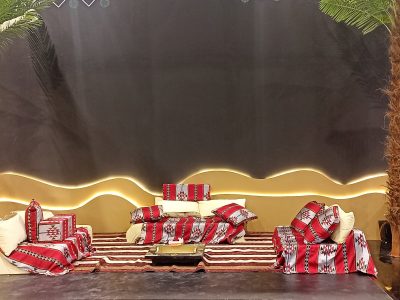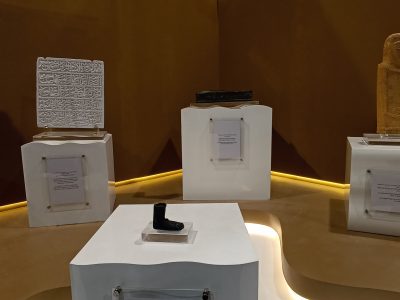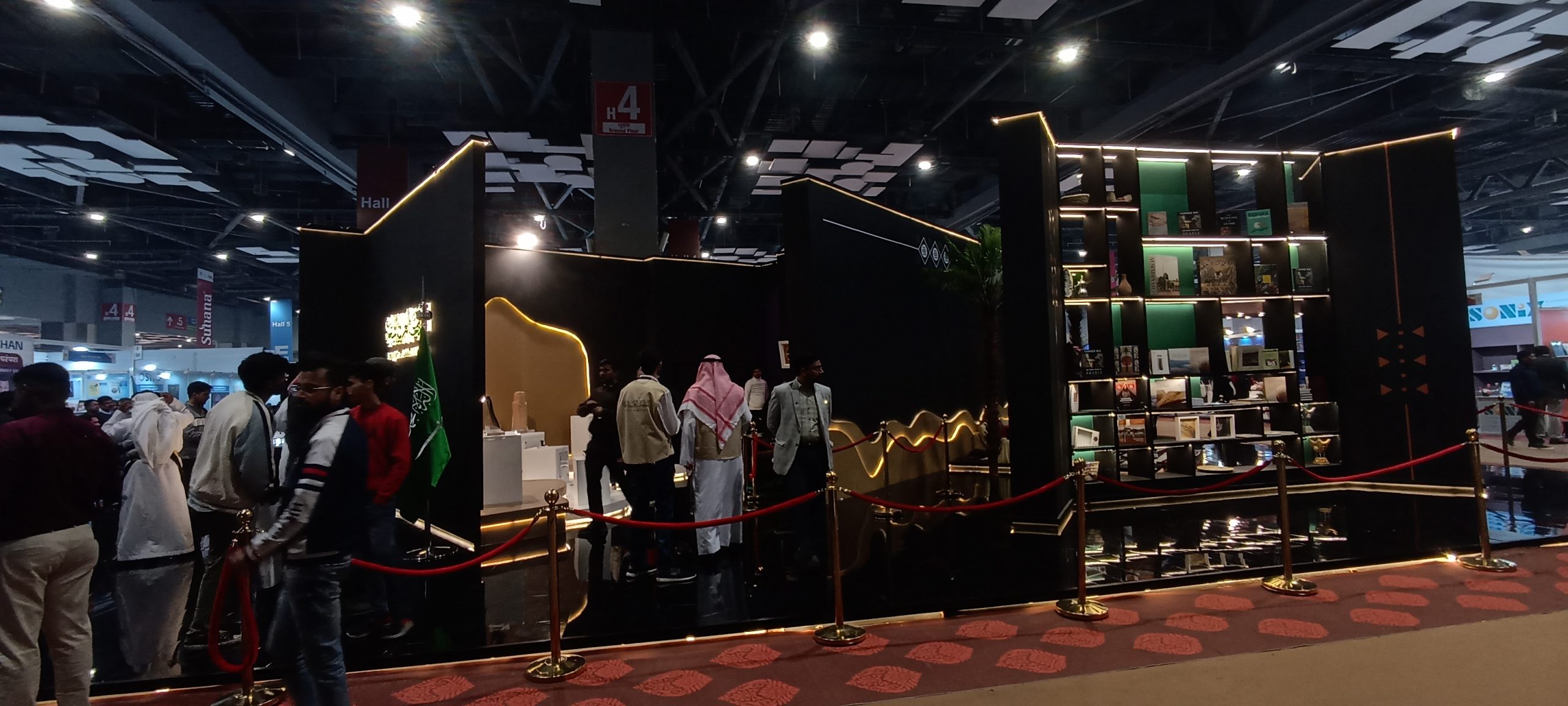There is much to see, from traditional music to the ancient heritage of the originally nomadic people. Walking along the peripheries of the World Book Fair, if one chooses to enter from Hall No. 6 of Pragati Maidan, a more concise rendition of the holy Kaaba greets visitors as they enter. Playing as home to the culture and tradition of the marquee foreign enclosure of the Kingdom of Saudi Arabia at the fair, it is all sorts of enlightening as it is mysterious.
The men head the reception desk dressed in the traditional thawb, while some fancied an additional accessory of the ghutrah headdress for accompaniment. The loose ends of the traditional dress floated along as they proceeded to speak in Arabic among themselves, ever so enthusiastic to share their culture with the many who visited the pavilion.
On the other hand, the women took to wearing the traditional abaya with the niqaab covering their faces barring their eyes. Speaking gaily with the many visitors, tinges of epiglottic pronunciation found a way into their diction as they pointed out a pair of faux palm trees that dotted the sides of the enclosure.
With the trees on either side, a couple of representatives of the KSA contingent found themselves seated on three floor-seaters accompanied by gold sequined pillows. Most visitors to the enclosure found themselves hovering over the area, attracted towards the gravity of getting their pictures clicked with a thawb-wearing Saudi man.

However, this attraction was broken by the slowly crescendoing sound of a percussion instrument at the pavilion’s entrance. A group of almost 10 musicians, armed with a middle-eastern version of a tambourine called a Mizmar, and a stringed instrument called Simsimiyya — a lookalike of the Western stringed instrument, Mandolin — started playing tunes that left everyone’s foot tapping, strangely at a book fair. The musicians swayed and flayed with every beat of its magnetic rhythm.
Men of the KSA contingent flocked around the musicians with a Saudi Arabian jambiya dagger in hand, paying homage to their nomadic traditions. Held horizontally in front of their eyes, their feet tapped away from left to right as the rhythm took hold of their being. The traditional Saudi Arabian dance called Ardah unfolded right in front of their eyes.
An experience that many visitors would reminisce for years to come. According to Hisham, the Project Manager of the enclosure, the construction of the structure took near about four days. It cost Rs 15 lakh.
“We used wood for the entire enclosure so that nothing goes to waste. The floor, on the other hand, has been made with acrylic and carbon fibre. The entirety took us around Rs 15 lakh to build,” he said.
He added that the planning and architectural design of the entire enclosure was done a couple of months in advance. “We are planning to reuse the wood which has been used here in a project later so that it decreases any form of wastage. This is why even the deconstruction will take almost the entire day since we will not be breaking anything down.

We will be removing each wooden piece and plank, piece by piece,” said the Project Manager.
Housed within its walls, is an array of artefacts from the annals of Saudi Arabia’s history. A mural fresco depicting a big eyed-man being approached by two other men with a bounty of grapes, to an engraved construction plaque in Arabic script dating to 1300 CE (Common Era), were some of the artefacts kept on display. Overlooking these was a calligraphy counter where the artist flicked with the end of her brush as visitors thronged to get their names written in Arabic.
The enclosure also proved home to the historic 26-stringed trapezoid instrument called Qanoon, which dates back to the 19th Century BCE. If one still wishes to catch a glimpse, the KSA contingent is slated to be present there till February 18. The fragrance of the Oudh incense burner should be enough to captivate you.





